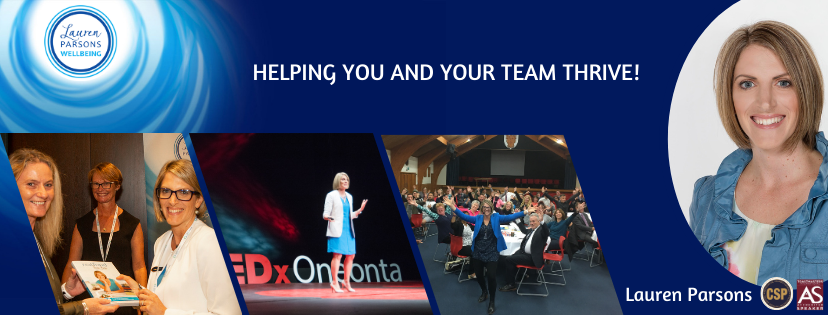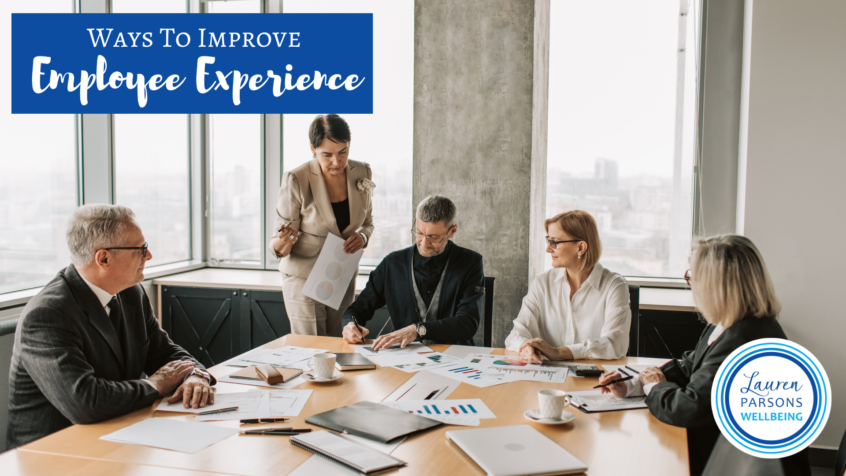An excerpt from Lauren Parsons’ book ‘Thriving Leaders Thriving Teams’.
To cultivate a phenomenal employee experience, it’s important to create rituals at each step of the journey, which will influence how people feel when they first join, in their day-to-day, right through to when they leave.
Each touchpoint will impact not only on how they perform and how long they stay with you, but also how they talk about your firm to others.
Ask yourself the key questions below at each point of your employee experience journey.
A powerful question you can ask at any point is simply, “How do we want people to feel?” When you can answer these questions and continually improve your employee experience, you’ll be rewarded with engaged team members who want to do their best (and who will stick with you for longer and recommend you to other great people).

Key Touchpoints to Foster Belonging
Recruitment
- How do you share your values and culture?
- What do you do to attract staff who will be a great fit?
- How do you want people to feel about your organisation when they first hear about it and as they interact with your staff?
Prior to starting
- How will you help new staff feel confident and excited about starting?
- How do you build connection with their team before they begin?
- How will you get to know your new staffer’s strengths and motivations?
First day
- What do you want a new employee’s first impression to be on their first day?
- How will you make them feel welcome?
- How can you overcome barriers (such as unknown words/acronyms, processes, layout, people)?
Induction training
- When, where and with whom will this take place?
- Which parts need to be delivered in person (while other parts can be via manuals, videos or learning on the job).
- How will you introduce new staff to their team and the wider team/organisation?
Ongoing Training and Development
- How do you align training with people’s goals and aspirations?
- How do you identify knowledge gaps?
Communication
- What communication channels will you use?
- Which channels for which purpose?
- How will you ensure key information gets through?
- How do you manage information overload?
Meetings
- How, when, and where do you hold meetings?
- How do you ensure meetings have purpose and value?
- What ways do you open and close meetings and build engagement and enjoyment?
- What etiquette and rules are in place for meetings?
Performance Management
- What’s your performance management philosophy?
- How does performance management link to employees’ individual goals and the organisation’s goals?
Celebrations
- How will you celebrate milestones (work anniversaries, birthdays, births, etc)?
- Where is the balance of responsibility between staff-organised and company-organised celebrations?

Recognition
- How do you recognise achievements and strong performance?
- How do you foster a culture of appreciation among colleagues?
- How can you ensure leaders know how their staff like to receive recognition?
Workplace Environment
- What’s important in workplace layout?
- What do you want staff to see, hear and feel when they’re onsite?
- How do you manage flow, collaboration, focus and productivity via the environment?
Exit process
- How will you manage other staff’s feelings when their colleague leaves?
- How will you communicate with the wider team?
- What will smooth the handover process?
Last day
- How will you honour the departing staff member?
- How will you learn from them?
How to make a real difference to your Employee Experience
STEP ONE – Identify which touchpoint you’ll focus on from the list above (just choose one!)
STEP TWO – Consider how people are likely to feel (e.g. on their first day they might feel uncertain, anxious and intimidated)
STEP THREE – Decide how you want people to feel (e.g. you might want them to feel supported, welcome and inspired)
STEP FOUR – Brainstorm ritual ideas that will help them feel that way (e.g. you could ensure they’ve got all their tech set up and ready to go, have a handbook with all the info they need, add them to the staff ‘who’s who board’ which has 5 fun facts about everyone, host a welcome lunch in their honour, and make sure they’ve got a mentor/buddy to look out for them in their first week.)
It’s the specific rituals that you put in place that build the foundation of your staff culture.
What steps will you take to build yours? Which touchpoint will you focus on first?
For a complete guide and Employee Experience Planning Sheet (and 20 other downloadable resources), grab a copy of Thriving Leaders Thriving Teams, or start out by downloading my complimentary eBook 5 Keys to a Positive, Energised, High-Performance Culture here.

About the Author – Lauren Parsons, CSP, AS
Lauren is a keynote speaker, author and consultant who’s passionate about helping busy people discover little-used techniques to boost their energy, vitality and performance. She’s the only speaker in the world to focus on lifting BOTH workplace wellbeing and productivity.
Awarded NZ Keynote Speaker of the Year and Educator of the Year 2023/24 by the Professional Speakers Association. Lauren is a sought-after international speaker, one of only a dozen Certified Speaking Professionals and the only Accredited Speaker in New Zealand.
TEDx speaker, Author of Thriving Leaders Thriving Teams and Real Food Less Fuss, Founder of the Snack on Exercise movement and host of the Thrive TV Show. With over 20 years’ experience, Lauren integrates her wellness and business background to help leaders find the sweet spot between boosting both wellbeing and productivity.
Described as unforgettable and life-changing, Lauren is a dynamic and highly-engaging presenter, and master story-teller who will have you laughing, moving and learning in a memorable way. Whether it’s virtual or in-person, you will leave Lauren’s session feeling uplifted and empowered to create positive change, today!
Based in the Manawatu, New Zealand, where she lives with her husband and three children, Lauren can often be found hosting dinner parties, playing board games, running, reading or getting out in her gumboots to walk the paddocks. She travels regularly to speak at conferences and in-house and specialises in helping leaders create positive, energised workplaces where people thrive.
Check out all the goodness at Lauren’s “Free Stuff” page at www.LaurenParsonsWellbeing.com

Ways to connect with Lauren
- Find out about conference keynotes
- See her most popular topics
- Make a time for a virtual cuppa over zoom
Share this Post
